Morgan McFall-Johnsen,Maiya Focht
Fri, September 1, 2023
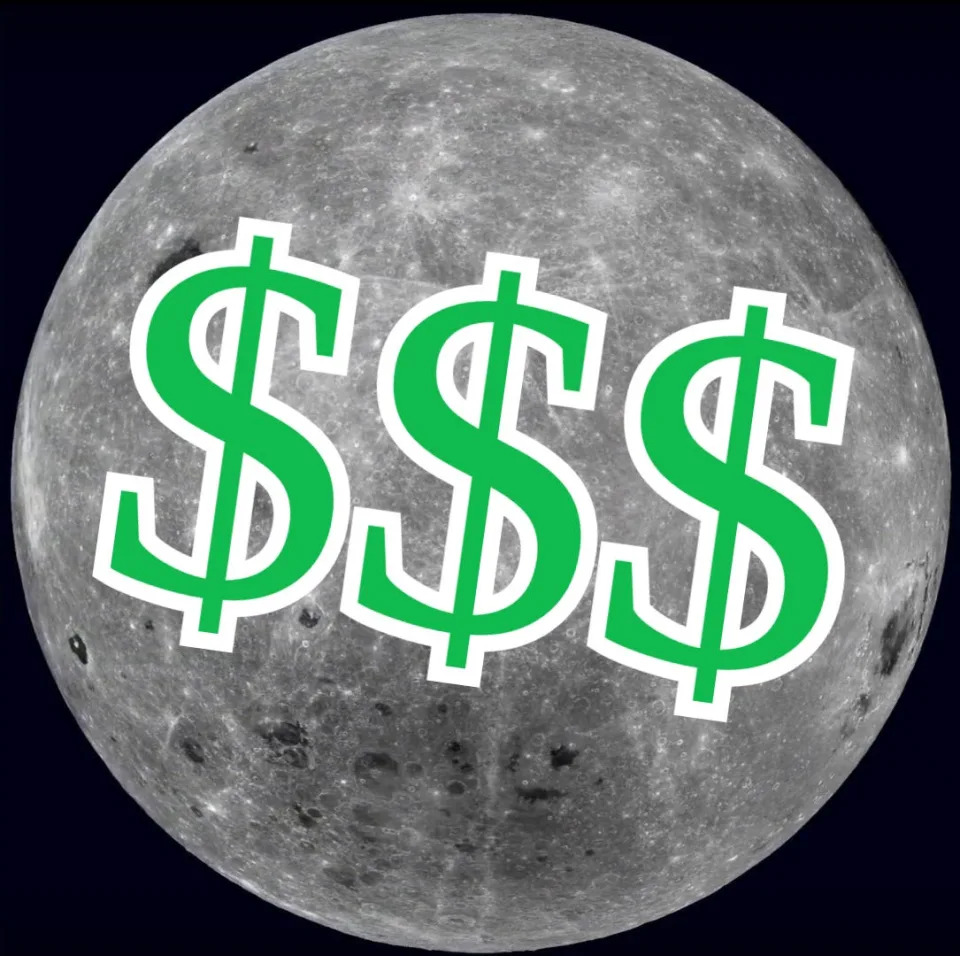
Getting to the moon is expensive, but India managed to do it on a budget.NASA/Goddard Space Flight Center/Arizona State University; Insider
India is the first to ever land near the moon's south pole and it succeeded without breaking the bank.
The Chandrayaan-3 moon mission cost far less than Russia's moon mission or NASA's planned rover.
India may have kept the price tag low by building a small lander and taking the moon one step at a time.
India's first moon landing, which touched down near the lunar south pole on August 23, was both historic and budget-friendly.
At about $74 million, India's moon mission was less than half the cost of Russia's south-pole lander ($200 million), which misfired its engines and crashed on August 20, as well as the estimated budget of NASA's planned VIPER rover to the lunar south pole ($433.5 million).
The Indian mission, called Chandrayaan-3, which is the first spacecraft to ever touch down near the moon's south pole, was also cheaper than the Hollywood space blockbusters "Gravity" ($100 million), "The Martian" ($108 million), and "Interstellar" ($165 million).
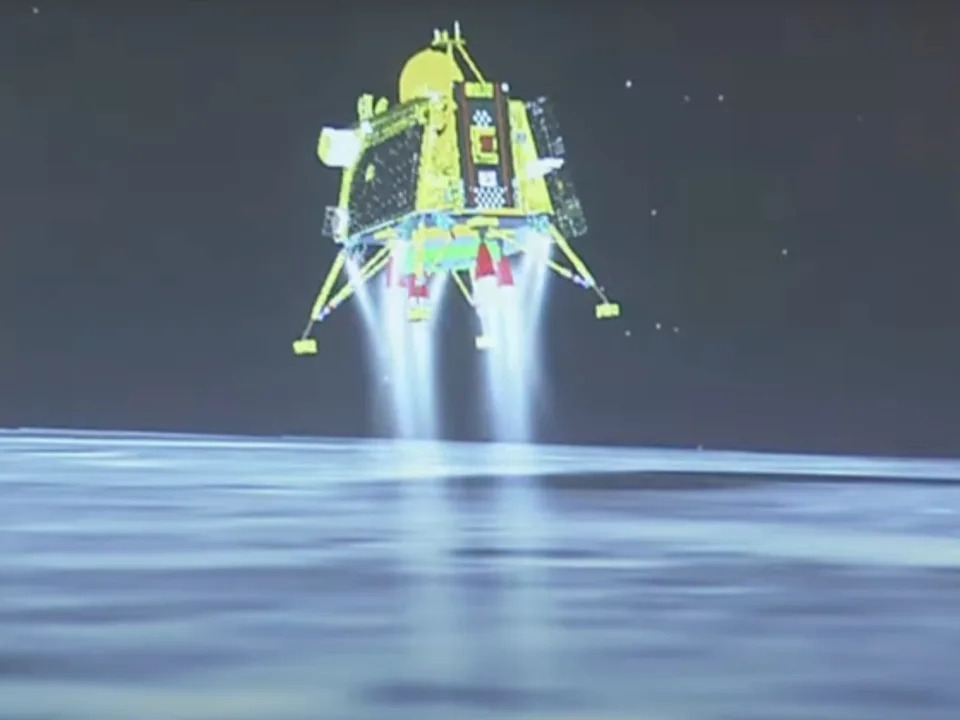
A still from a livestream shows a 3D reconstitution of India's historic moon landing. India has become the first nation to land a robotic mission to the crucial south pole of the moon.ISRO
"Good for India," SpaceX CEO Elon Musk wrote, commenting on the mission's low price tag in a post on X, the platform formerly known as Twitter.
Asked how they managed to keep costs so low, S. Somanath, the director of the Indian Space Research Organization (ISRO), told reporters with a laugh: "I won't disclose such secrets. We don't want everyone else to become so cost-effective," according to the New York Times.

S. Somanath addresses the media after the successful landing of spacecraft Chandrayaan-3 on the moon, in Bengaluru, India.Aijaz Rahi/AP Photo
Unlike NASA, which is required to publish detailed budget proposals, India has shared very little information about its budgeting. So, it's unclear what went into the $74 million cost estimate.
That's also a conversion from Indian currency, rupees, so the comparison isn't apples to apples.
Still, the small price tag can be partially explained by the small size and scope of the mission, and the fact that it was a redo of an earlier flight.
Small spacecraft, small costs

Indian spacecraft Chandrayaan-3, the word for "moon craft" in Sanskrit, travels after it was launched from the Satish Dhawan Space Centre in Sriharikota, India.Aijaz Rahi/AP Photo
India's main strategy for being frugal on the moon seems to be that it kept the spacecraft small.
Weighing in at just 1,752 kilograms, according to ISRO, Chandrayaan-3 was likely relatively cheap to launch.
"Small landers imply smaller launch vehicles, smaller components, less materials," Robert Braun, head of space exploration at Johns Hopkins Applied Physics Laboratory, told Insider. "If the scope of the mission is small, then the cost is likely to be small."
That's a lesson that ISRO first learned in 2014, when they became the first country to successfully insert a spacecraft in Mars orbit on the first try.
By keeping the payload light, adapting technologies ISRO had used before, and keeping workers' salaries lean, Wired reported, the agency managed to keep the receipt for the Mars mission to $74 million. (Same as Chandrayaan-3. Weird coincidence!)

ISRO gets India's Mars craft ready for launch.Pallava Bagla/Corbis via Getty Images
This is markedly different from how NASA's Mars orbiter, MAVEN, operated.
India "kept it small," Andrew Coates, a physics professor who has worked on European and NASA Mars missions, told the BBC in 2014. "The payload weighs only about 15 kg. Compare that with the complexity in the payload in MAVEN and that will explain a lot about the cost."
The proof of concept may lie in comparing the programs' receipts. The MAVEN mission cost NASA $582.5 million, according to the Planetary Society.
But Chandrayaan-3 was actually heavier than Russia's failed mission, called Luna-25, which weighed about 1,237 kg by the time it reached lunar orbit, according to Anatoly Zak, an English-language reporter covering Russia's space programs.
That's where India's other strategy may come in to beat out Russia's price tag.
Start small and build step by step, to the moon and beyond
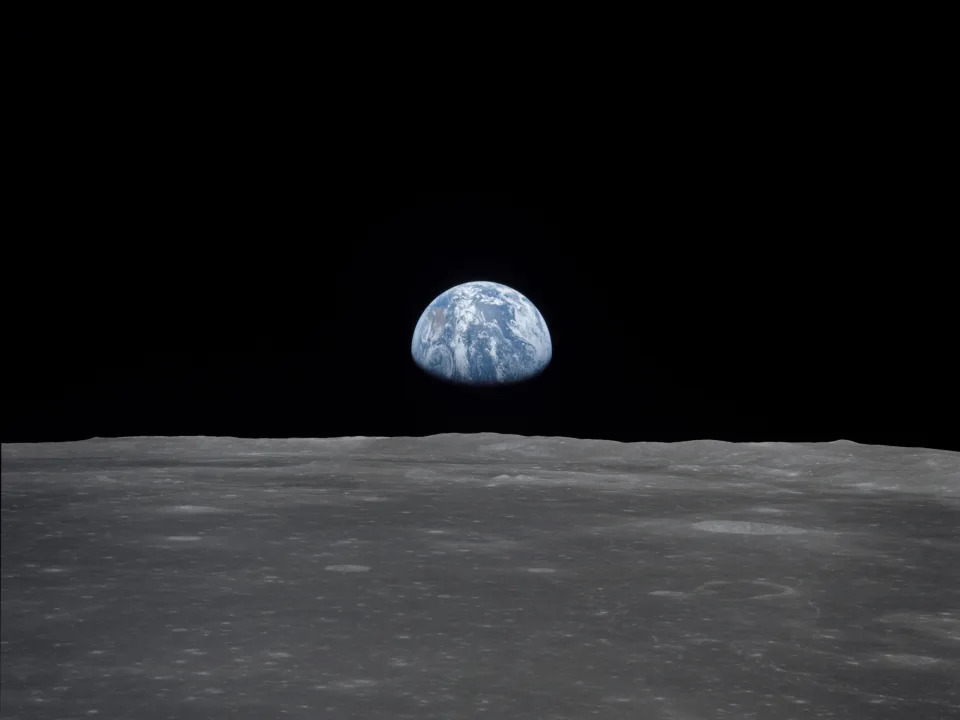
The Earth captured by the Appllo 11 mission from the moon.NASA/JSC
This wasn't India's first attempt to land near the moon's south pole. A previous mission, Chandrayaan-2, crashed there in 2019.
The costs of research, development, and testing that went into that first attempt may not be included in the cost of Chandrayaan-3.
"They've approached their lunar program as a series of missions," Braun said. "That is a way of managing cost."
India's moon program began with Chandrayaan-1, which sent a spacecraft into lunar orbit and dropped a hard-impact probe to intentionally crash into the lunar surface.
That's a much easier and cheaper mission to start building new capabilities, then build up to a soft landing and a small rover.
NASA has taken a similar approach to Mars, and it has "worked very well," Braun said.
Compare that to Russia's Luna-25 mission. It was the country's first mission to the moon since the 1970s and the fall of the Soviet Union. It aimed to make a soft landing on the south pole of the moon, where nobody had succeeded yet.
"They went with a pretty hard mission, right out of the gate," Braun said, adding, "I think an incremental approach actually is a great way to pursue space exploration. One step at a time."
India's adorable, dog-sized moon rover did its first science on the moon by shooting powerful laser beams at the surface
Sonam Sheth,Morgan McFall-Johnsen
Updated Fri, September 1, 2023
India becomes the first country to land on the moon's south pole
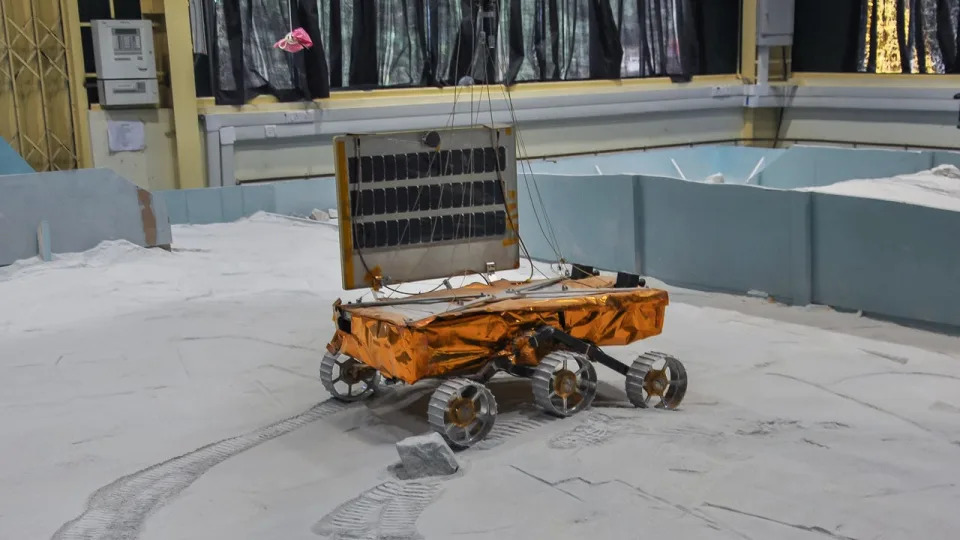
The Pragyaan rover will be the first robot to drive around near the lunar south pole. What will it find?Indian Space Research Organization
India's moon rover made its first scientific observation near the lunar south pole.
The 57-pound rover is called Pragyaan — a Hindu name meaning one who possesses wisdom.
Pragyaan has confirmed the presence of sulfur as well as detected other elements.
India made history by becoming the first country to land successfully near the lunar south pole. And its lunar rover wasted no time in rolling out to make its first scientific observations.
On Tuesday, the Indian Space Research Organization announced on its website that the moon rover had confirmed the presence of sulphur. And preliminary analyses also suggest the presence of aluminum, calcium, iron, chromium, and titanium.
Suffice it to say, the rover's been busy. This adorable rover is called Pragyaan — a Hindu name meaning one who possesses greater knowledge and wisdom.
Pragyaan weighs 57 pounds, about the size of a small German shepherd or bull terrier, and it's spending two weeks driving where no robot or human has been before.
Pragyaan's science could be critical for learning how to mine moon water — a goal every moon-minded nation is eyeing.
The rover may be small and cute, but India's new moon mission "definitely puts them on the international stage as an emerging space power," Robert Braun, head of space exploration at Johns Hopkins Applied Physics Laboratory, told Insider.
What will India's moon rover do next?
It's equipped with a laser and an alpha-particle beam to help it study the composition of the lunar south pole region, which is of particular interest.

The Vikram lander is the first robot to successfully land near the lunar south pole. Inside, it carried the Pragyaan lunar rover, which rolls out and down to the ground on the ramp shown here.Indian Space Research Organisation
The lunar south pole is thought to be the most water-rich region on the moon. That's critical since water ice could be mined to produce breathable oxygen for future crewed lunar bases, as well as hydrogen and oxygen for rocket fuel that could propel future missions to Mars and beyond.
The rover will also use its RAMBHA and ILSA payloads on board to study the lunar atmosphere as well as dig up samples for additional analysis of the surface's composition, per Times of India.
But it was the rover's Laser-Induced Breakdown Spectroscopy (LIBS) instrument that ultimately made the first-ever measurements of the lunar south pole region's composition, ISRO reported. The laser fires intense pulses at the lunar surface, which generates an extremely hot plasma.
That's where a trick of physics comes in handy: Each element on the periodic table emits a unique set of wavelengths of light. Scientists can study the light from the plasma to identify those wavelength sets and determine the chemical make-up of the stuff on the moon.
A moment for the history books
India is the fourth country — after Russia, the US, and China — to land on the moon.
"It's a huge achievement for the whole nation," Braun said. "Last time they got to the playoffs, if you will, and this time they won the Super Bowl."
"Everyone in the space community is joining with the nation of India, and their talented engineers and scientists, and celebrating their success and this achievement," he added.
Sonam Sheth,Morgan McFall-Johnsen
Updated Fri, September 1, 2023
India becomes the first country to land on the moon's south pole

The Pragyaan rover will be the first robot to drive around near the lunar south pole. What will it find?Indian Space Research Organization
India's moon rover made its first scientific observation near the lunar south pole.
The 57-pound rover is called Pragyaan — a Hindu name meaning one who possesses wisdom.
Pragyaan has confirmed the presence of sulfur as well as detected other elements.
India made history by becoming the first country to land successfully near the lunar south pole. And its lunar rover wasted no time in rolling out to make its first scientific observations.
On Tuesday, the Indian Space Research Organization announced on its website that the moon rover had confirmed the presence of sulphur. And preliminary analyses also suggest the presence of aluminum, calcium, iron, chromium, and titanium.
Suffice it to say, the rover's been busy. This adorable rover is called Pragyaan — a Hindu name meaning one who possesses greater knowledge and wisdom.
Pragyaan weighs 57 pounds, about the size of a small German shepherd or bull terrier, and it's spending two weeks driving where no robot or human has been before.
Pragyaan's science could be critical for learning how to mine moon water — a goal every moon-minded nation is eyeing.
The rover may be small and cute, but India's new moon mission "definitely puts them on the international stage as an emerging space power," Robert Braun, head of space exploration at Johns Hopkins Applied Physics Laboratory, told Insider.
What will India's moon rover do next?
It's equipped with a laser and an alpha-particle beam to help it study the composition of the lunar south pole region, which is of particular interest.

The Vikram lander is the first robot to successfully land near the lunar south pole. Inside, it carried the Pragyaan lunar rover, which rolls out and down to the ground on the ramp shown here.Indian Space Research Organisation
The lunar south pole is thought to be the most water-rich region on the moon. That's critical since water ice could be mined to produce breathable oxygen for future crewed lunar bases, as well as hydrogen and oxygen for rocket fuel that could propel future missions to Mars and beyond.
The rover will also use its RAMBHA and ILSA payloads on board to study the lunar atmosphere as well as dig up samples for additional analysis of the surface's composition, per Times of India.
But it was the rover's Laser-Induced Breakdown Spectroscopy (LIBS) instrument that ultimately made the first-ever measurements of the lunar south pole region's composition, ISRO reported. The laser fires intense pulses at the lunar surface, which generates an extremely hot plasma.
That's where a trick of physics comes in handy: Each element on the periodic table emits a unique set of wavelengths of light. Scientists can study the light from the plasma to identify those wavelength sets and determine the chemical make-up of the stuff on the moon.
A moment for the history books
India is the fourth country — after Russia, the US, and China — to land on the moon.
"It's a huge achievement for the whole nation," Braun said. "Last time they got to the playoffs, if you will, and this time they won the Super Bowl."
"Everyone in the space community is joining with the nation of India, and their talented engineers and scientists, and celebrating their success and this achievement," he added.
India wants to fly its own astronauts to the moon, after becoming the first nation to land near the lunar south pole
Marianne Guenot,Morgan McFall-Johnsen
Fri, September 1, 2023

A still from a livestream shows a 3D reconstitution of India's historic moon landing.ISRO
India plans to build on its historic lunar landing by sending people to the moon.
India landed its first lunar spacecraft, and the first robotic mission near the moon's south pole.
India will "look into a human flight mission as well in the future," said Prime Minister Narendra Modi.
Prime Minister Narendra Modi confirmed India's intention to send people to the moon in the near future as the nation celebrated the successful landing of the world's first-ever robotic mission to the lunar south pole region.
India's Chandrayaan-3 probe defeated all odds on August 23 after it managed to successfully land near the south pole of the moon, beating competing nations to the strategically important site.
With the landing, India has become the fourth nation — after Russia, the US, and China — to land on the moon.
"It definitely puts them on the international stage as an emerging space power," Robert Braun, head of space exploration at Johns Hopkins Applied Physics Laboratory, told Insider.
The nation will build on this mission success by launching its first crewed mission to the moon, Modi said in Hindi during a livestream of the landing, Sky News reported.

Indian Space Research Organization (ISRO) staff watch Prime Minister Narendra Modi speak after the landing of spacecraft Chandrayaan-3 on the moon.Aijaz Rahi/AP Photo
"India is now on the moon," said Modi, per the BBC.
The nation "will look into a human flight mission as well for the future," he said, per Sky News.
Indian astronauts to Earth's orbit and beyond
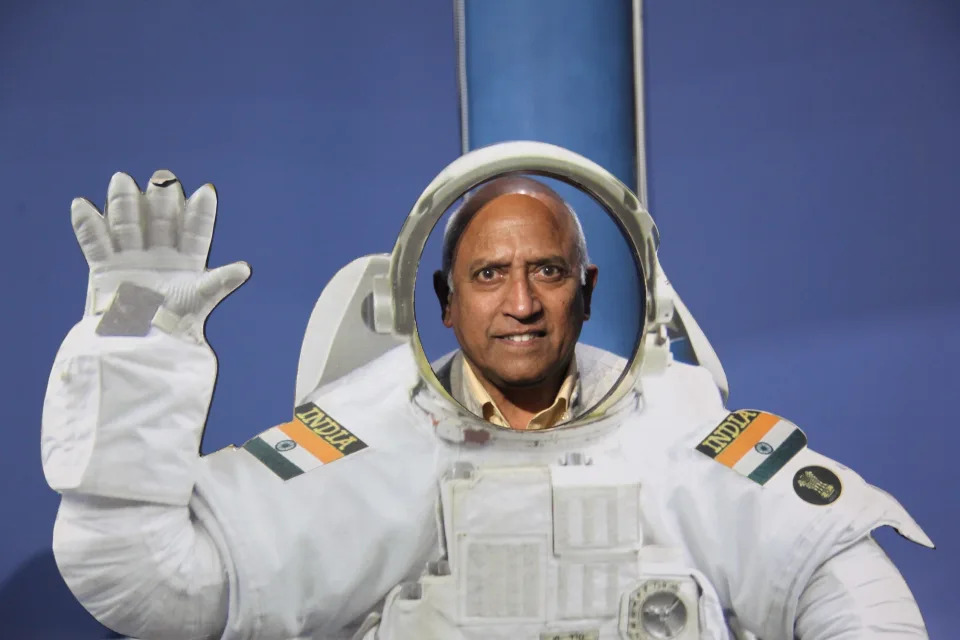
Astronaut Rakesh Sharma, the only Indian national to have flown into space, poses behind an Indian astronaut uniform.Pallava Bagla/Corbis via Getty Images
India has previously said it will attempt a crewed mission to low-Earth orbit by late 2024, the Times of India reported.
"India is showing and proving that the sky is not the limit," said Modi per Sky News.

Indian spacecraft Chandrayaan-3 launches from the Satish Dhawan Space Centre in Sriharikota, India.Aijaz Rahi/AP Photo
Per the Indian Space Research Organisation, India plans to first launch two uncrewed missions, Gaganyaan 1 and 2, the first of which is planned by the end of this year. The missions should test the capacity of the nation's rocket, LVM3.
This should be followed by the nation's first crewed mission, which will aim to send three astronauts to low-Earth orbit for a three-day mission.
India nailed a difficult feat amid multiple moon crashes
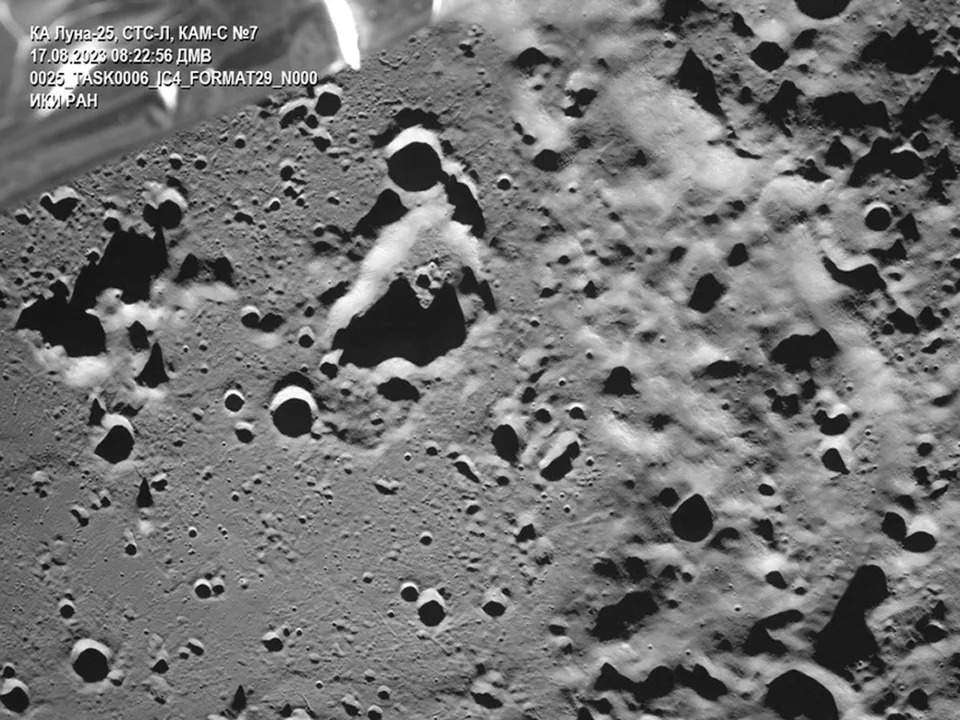
The lunar south pole region on the far side of the moon, captured by Russia's Luna-25 spacecraft, before its failed attempt to land.Centre for Operation of Space Ground-Based Infrastructure-Roscosmos State Space Corporation via AP
The Chandrayaan-3 mission, which successfully landed the Vikram lander near the south pole of the moon, cemented India's position as a frontrunner in the race to the moon.
The south polar region is strategically important because scientists believe water ice is present in the area. The hope is this water could someday support humans living on the moon and help manufacture fuel for rockets launching from the moon to Mars.
Russia's space agency, Roscosmos, tried to land its own robotic mission near the south pole of the moon, but on August 20 it misfired its engines and crashed.
Both Japanese private company ispace and Israeli nonprofit SpaceIL have also crashed on the moon in recent years.
India's first attempt at the lunar south pole region in 2019, called Chandrayaan-2, crashed as well. Clearly the Indian space agency learned a lot from that failed landing.
"Last time they got to the playoffs, if you will, and this time they won the Super Bowl," Braun said.
Marianne Guenot,Morgan McFall-Johnsen
Fri, September 1, 2023

A still from a livestream shows a 3D reconstitution of India's historic moon landing.ISRO
India plans to build on its historic lunar landing by sending people to the moon.
India landed its first lunar spacecraft, and the first robotic mission near the moon's south pole.
India will "look into a human flight mission as well in the future," said Prime Minister Narendra Modi.
Prime Minister Narendra Modi confirmed India's intention to send people to the moon in the near future as the nation celebrated the successful landing of the world's first-ever robotic mission to the lunar south pole region.
India's Chandrayaan-3 probe defeated all odds on August 23 after it managed to successfully land near the south pole of the moon, beating competing nations to the strategically important site.
With the landing, India has become the fourth nation — after Russia, the US, and China — to land on the moon.
"It definitely puts them on the international stage as an emerging space power," Robert Braun, head of space exploration at Johns Hopkins Applied Physics Laboratory, told Insider.
The nation will build on this mission success by launching its first crewed mission to the moon, Modi said in Hindi during a livestream of the landing, Sky News reported.

Indian Space Research Organization (ISRO) staff watch Prime Minister Narendra Modi speak after the landing of spacecraft Chandrayaan-3 on the moon.Aijaz Rahi/AP Photo
"India is now on the moon," said Modi, per the BBC.
The nation "will look into a human flight mission as well for the future," he said, per Sky News.
Indian astronauts to Earth's orbit and beyond

Astronaut Rakesh Sharma, the only Indian national to have flown into space, poses behind an Indian astronaut uniform.Pallava Bagla/Corbis via Getty Images
India has previously said it will attempt a crewed mission to low-Earth orbit by late 2024, the Times of India reported.
"India is showing and proving that the sky is not the limit," said Modi per Sky News.

Indian spacecraft Chandrayaan-3 launches from the Satish Dhawan Space Centre in Sriharikota, India.Aijaz Rahi/AP Photo
Per the Indian Space Research Organisation, India plans to first launch two uncrewed missions, Gaganyaan 1 and 2, the first of which is planned by the end of this year. The missions should test the capacity of the nation's rocket, LVM3.
This should be followed by the nation's first crewed mission, which will aim to send three astronauts to low-Earth orbit for a three-day mission.
India nailed a difficult feat amid multiple moon crashes

The lunar south pole region on the far side of the moon, captured by Russia's Luna-25 spacecraft, before its failed attempt to land.Centre for Operation of Space Ground-Based Infrastructure-Roscosmos State Space Corporation via AP
The Chandrayaan-3 mission, which successfully landed the Vikram lander near the south pole of the moon, cemented India's position as a frontrunner in the race to the moon.
The south polar region is strategically important because scientists believe water ice is present in the area. The hope is this water could someday support humans living on the moon and help manufacture fuel for rockets launching from the moon to Mars.
Russia's space agency, Roscosmos, tried to land its own robotic mission near the south pole of the moon, but on August 20 it misfired its engines and crashed.
Both Japanese private company ispace and Israeli nonprofit SpaceIL have also crashed on the moon in recent years.
India's first attempt at the lunar south pole region in 2019, called Chandrayaan-2, crashed as well. Clearly the Indian space agency learned a lot from that failed landing.
"Last time they got to the playoffs, if you will, and this time they won the Super Bowl," Braun said.
No comments:
Post a Comment